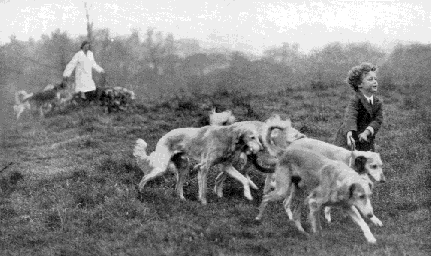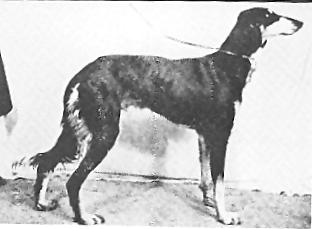|
|
Saluki Explorers: |
|
|
Saluki Explorers: |
| From the Fertile Crescent of
Mesopotamia, traders carried the saluki throughout the
Middle East, where they became the treasured coursing
hounds of the nomadic tribes. Though their origins
were still deeply rooted in the vast arid regions of the
Middle East, European travelers brought Salukis back with
them. There is evidence of Salukis in Belgium during the
Middle Ages, but their presence outside the region of
origin became most evident in the late 1800s. By
the turn of the century, Salukis had arrived in England.
The Saluki or Gazelle Hound Club was formed in England in
1923 and provided the first available breeding stock for
those generations now residing on other continents. |
|
 Walking Amherstia Salukis ~ who's leading who? |
One of the first breeders to import
the Saluki from the Region of Origin (ROO) was the
daughter of a prominent expert on Egypt, Lady Florence
Amherst. She founded the Amherstia Kennels in England.
Her Salukis were primarily from Egypt a "southern
strain," taller, leggier, lighter in bone and with
less feathering. They were true desert hounds, bred
for both speed and endurance in desert conditions. |
Next came General Lance, retired from the British Army, who returned to England with Salukis he had acquired in Syria. These hounds, of a "Northern strain", were bred to hunt in the rough, colder, mountainous terrain of Syria, Northern Iraq and Iran. Stockier, heavier boned, with thicker coats and more profuse feathering, they were exemplified by the General's favorite dog, Ch. Sarona Kelb. Kelb was the first dog saluki champion in England. Kelb is behind the pedigree of many English Salukis. |
|
 Ch. Sarona Kelb |
Since that time Salukis have been imported to North America and other continents where they have been bred by concientious, instrumental breeders and thus retain essentially the same traits and appearances as they have for centuries. |
Early
Man Needs Dog | The
Ancients | Nomadic
Peoples | Function
& Form | Hunting Technique |
|